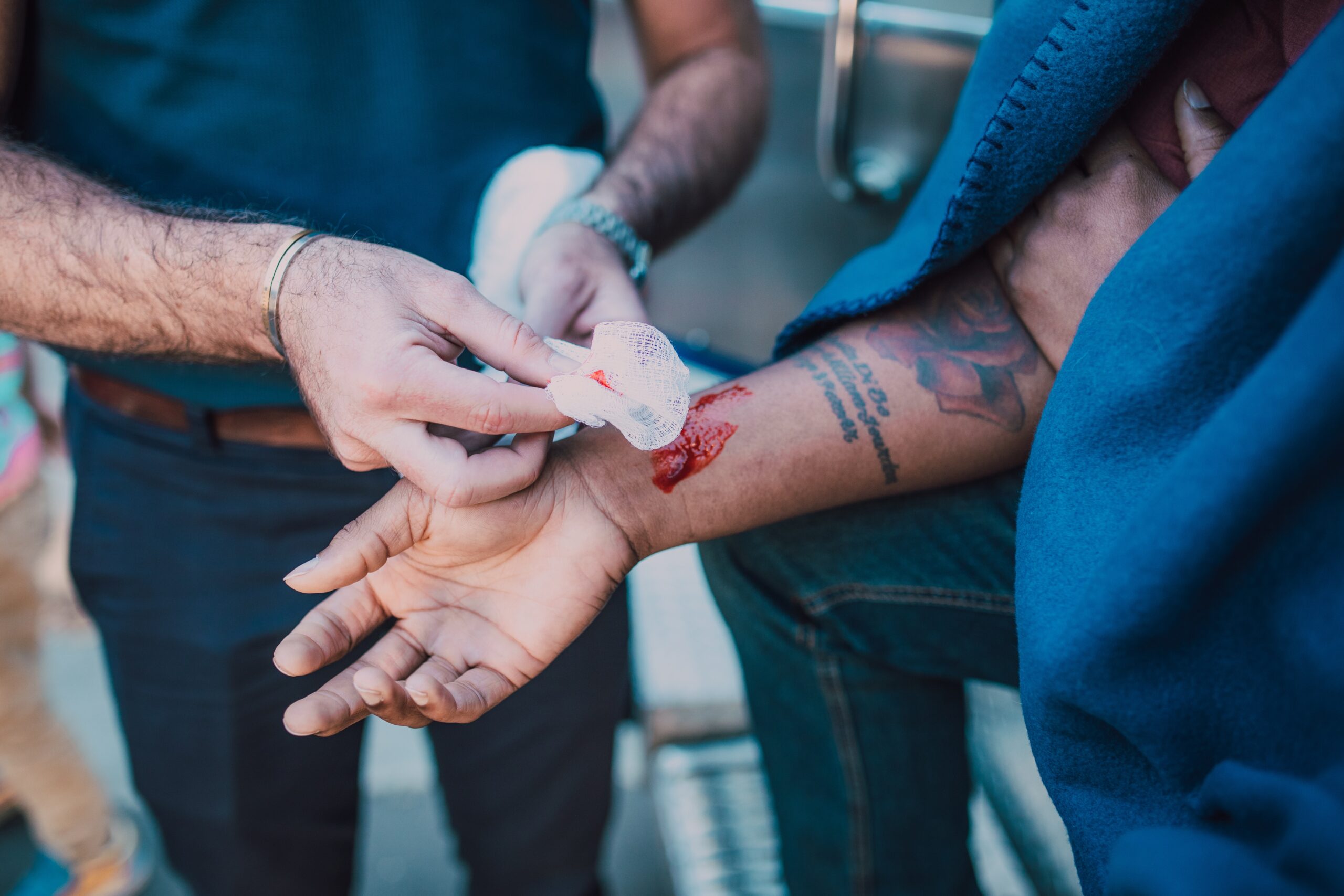
Motorcycle rider safety has become a major topic as the riding season approaches. When it comes to safety, motorcycle riders are usually at the top of the list. This makes the statistics stand out, despite the fact that ordinary riding injuries are considerably more common than deaths. Road rash, for example, is the most frequent motorcycle accident injuries suffered when biking. Isn’t it fantastic?
According to the National Highway Traffic Safety Administration (NHTSA), motorcycle riders are 26 times more likely than passengers in enclosed cars to die in a traffic accident and 5 times more likely to be injured. We’ll go over why riding a motorcycle increases your chances of suffering a simple injury, as well as what you can do if one occurs.
Bumps and bruises that occur as a result of cycling are among the most straightforward issues to mention. On some days, you may find yourself looking at your body and wondering, “Where did that bruise come from?” For you, it’s just another day in your life. Bumps and bruises are a small part of riding a motorbike. And after they’ve healed, there won’t be anything to talk about.
Because the injuries you may incur while riding a motorbike are more serious. They will be more difficult to recover from. A hard-hitting collision can result in muscle injury, “biker’s arm,” and foot/leg injuries. Each injury may be more difficult to heal from, and recovery timeframes may differ depending on the damage.
Contents
Common Motorcycle Accident Injuries

Muscle Damage
Any of the 600 muscles in the human body [1] can be damaged in an accident. While it may just take a few days to notice a significant improvement in the healing of damaged muscles while we are younger, the recovery period may lengthen as we become older. Although the majority of motorcycle accidents are mild sprains rather than muscular tissue tears, the danger of injury increases as you ride harder. Consider the difference between a highway journey and a day of off-road riding. Although the journey should be easier on the body, the off-road adventure may leave you in agony for many days or longer.
Motorcycle Accident Injuries – Biker’s Arm
A broken arm incurred in a motorcycle accident or tumble is referred to as a “broken arm.” An arm injury might be caused by muscle injuries, tendon injuries, bruises, or anything more akin to a fracture or broken bone. Because it’s natural to put your arms down to stop yourself from falling, it’s generally associated with an accident. Arm injuries are generally caused by the act of bracing for impact (s).
Foot and leg injuries
These include bruises, wounds, sprains, muscle injuries, and breaks. The legs and feet are the closest to the ground when riding a motorcycle. And they are usually the first to contact the ground in an accident. Motorcyclists who sought treatment after an accident reported 47 percent having lower extremity injuries [3].
As we discuss ATGATT, bumps and bruises may be the tip of the iceberg when it comes to motorcycle injuries (all the gear, all the time). Proper safety equipment can prevent you from road rash and serious burns in the case of a motorcycle accident. The appropriate gear can protect your skin from the ground and other objects in the event of a crash. The asphalt, dirt, and even hot exhaust pipes become possible injury locations in a crash. Our natural tendency is to use our hands and arms to brace ourselves for a fall. And if you don’t wear safety equipment, you’ll end up with road rash and burns on your upper body and limbs. Both of these injuries can take a long time to heal, necessitating surgeries and skin grafts, and are nearly always painful.
If such injuries don’t appeal to you, there are others that are less common yet have far more catastrophic consequences. Head and face injuries, spine injuries, and mental stress are all less common, but the human cost is higher.
Motorcycle Accident Injuries – Head injuries
Even if you’re wearing protective gear, these things can happen. Gear will help to reduce the risk of harm, but it will not completely eliminate it. If you don’t wear a helmet, you’re likely to get a head injury. It might be anything simple like a bump or a scratch, or something more catastrophic like concussions or traumatic brain injury. According to the National Highway Transportation Safety Administration (NHTSA), over 1,600 motorcycle riders’ lives are spared each year because they wear a proper safety helmet.
A proper safety helmet and eye protection can help prevent a brain injury and a fall from progressing beyond a concussion. Eardrums can damaged as a result of an accident. A strike to the side of your head, whether with or without a helmet, may damage your ability to hear. The effects might range from a temporary hearing loss to a complete loss of hearing.
Facial injury
Helmets, on the other hand, may aid in the prevention of facial injuries. Your top and sides of your head will protected by a half- or three-quarter helmet, but your face and jaw will not. Face protection is only provided by a full-face helmet; nevertheless, a full-faced helmet can still inflict a cut, bruising, or concussion. Investing in adequate safety gear as a reliable insurance policy against catastrophic injury is always preferable than riding without one. Between 2003 and 2005, 10% of motorcyclists who sought medical attention after an accident reported face injuries [3].
Spinal injury
A spinal injury is not unheard of, but it is rarer than you may assume. It can occur on a variety of levels. A motorcycle collision might result in a bruised spine, a slipped disc, or something even more serious. The most prevalent cause of more serious spine injuries is contact with a fixed or larger object. Consider the following examples: a tree, a guard rail, a passenger car, and so forth.
Emotional trauma
Last but not least, one of, if not the worst, injuries that may occur from a motorcycle accident is emotional stress. Many people identify post-traumatic stress disorder (PTSD) with military traumas rather than motorcycle accidents, although it can last for years or decades after a crash. Emotional trauma may have an impact on our everyday routines and how we perceive the world. Bones can heal and scars fade, but mental trauma can alter our daily routines and perceptions of the world.
What Should You Do If You’ve Been Injured on a Motorcycle?
Following a motorcycle accident, there is no one-size-fits-all solution. Whether or whether you were injured and the kind of your injury will decide the bulk of your actions following a motorbike accident. If you are capable and the injury is minor, taking some time off to allow your body to recover before returning to riding may be adequate. If you need medical care in the future, antibiotics may be necessary to help reduce the risk of infection (perhaps from a cut or road rash).
You can also accomplish activities that aren’t linked to your injury, such as:
- Obtain a police report if at all possible.
- Take as many pictures of the accident as you can. If you need a lot of photographs, take a few shots of each automobile from different angles. Most smartphones now include a camera, so snapping photos in a pinch shouldn’t be a problem.
- Insurance and contact information should be provided by all parties involved. If you don’t have a pen and paper on hand, a short snapshot taken with your phone will sufficient to retain the information for later review.
- Contact your insurance company as soon as possible. Even if you were not at fault for the accident, your insurance company may be able to help you locate a new vehicle insurance provider.
- Finally, try not to lose your cool. Your adrenaline will be flowing at the time of the mishap. Take a couple deep breaths in and out. Your motorbike and your belongings can replaced, but you can’t replace yourself.
When Should You Seek Legal Assistance and What Should You Do?
It is up to you to seek legal help if you are involved in a motorcycle accident. If the accident was minor and the parties’ financial obligations were handled by the insurance companies, you may not feel the need to seek legal assistance. On the other side, you might suffer injuries that need medical attention, a hospital stay, and several procedures, all of which could have long-term effects.
In certain cases, having a competent legal team on your side may be all you need to get the job done. We have a number of articles on how to select the right legal team, how to work on legal issues, how to handle accident claims, and more. That series could contain all of the answers to your questions. If not, we’ll gladly help you as required.


